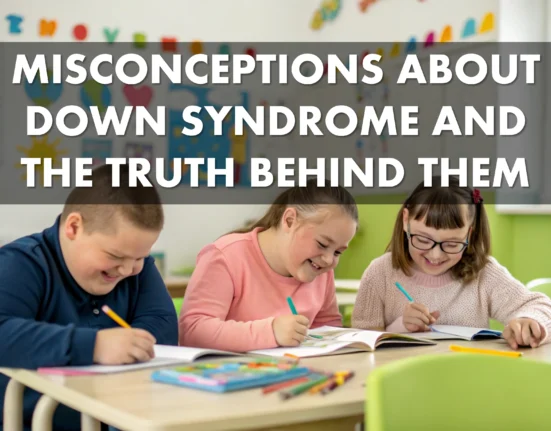Plan of the Article
- Step 1: Identifying a Need
- Step 2: Referral for Evaluation
- Step 3: Conducting the Evaluation
- Step 4: Eligibility Determination
- Step 5: Developing the IEP (Individualized Education Program)
- Step 6: IEP Meeting
- Step 7: Implementing the IEP
- Step 8: Reviewing the IEP
- Step 9: Resolving Disagreements
- Step 10: Transition Planning
Introduction
Navigating the special education process can be overwhelming for parents and educators alike. Understanding the basic steps involved is crucial for ensuring that children with special needs receive the appropriate support and services. This article outlines the 10 fundamental steps in the special education process, providing a clear roadmap for parents, teachers, and administrators.
Step 1: Identifying a Need
The first step in the special education process is recognizing that a child may have a learning or developmental need that requires additional support. This can be identified by parents, teachers, or other professionals who notice that the child is struggling with academic, social, or behavioral aspects in school.
Who Can Initiate the Process?
Anyone who is involved in the child’s education, including parents, teachers, and school administrators, can initiate the process by raising concerns and suggesting that the child be evaluated for special education services.
Step 2: Referral for Evaluation
Once a need is identified, a formal referral for evaluation is made. This referral is typically written and submitted to the school’s special education team. The purpose of this evaluation is to determine whether the child has a disability that affects their learning and if they are eligible for special education services.
Roles in the Referral Process
Parents play a key role in the referral process and should be informed of their rights and the steps involved. Teachers and other school staff also contribute by providing observations and academic data that support the referral.
Step 3: Conducting the Evaluation
The evaluation is a comprehensive assessment of the child’s abilities and needs. It typically includes a series of tests and observations by specialists, such as psychologists, speech therapists, and occupational therapists. The goal is to gather detailed information about the child’s strengths and challenges.
Types of Assessments
The evaluation may include cognitive assessments, academic testing, behavioral observations, and interviews with the child, parents, and teachers. The results will help to determine the specific areas where the child needs support.
Step 4: Eligibility Determination
After the evaluation is completed, the team meets to determine if the child is eligible for special education services under the Individuals with Disabilities Education Act (IDEA). To qualify, the child must have a disability that affects their ability to learn in a general education classroom without specialized instruction.
The Decision-Making Process
The eligibility decision is based on the evaluation results and is made by a team that includes the child’s parents, teachers, and other professionals. If the child is found eligible, the process moves forward to develop an Individualized Education Program (IEP).
Step 5: Developing the IEP (Individualized Education Program)
The IEP is a legally binding document that outlines the child’s specific educational goals, the services they will receive, and how progress will be measured. It is tailored to meet the unique needs of the child and must be developed within 30 days of the eligibility determination.
Components of an IEP
An IEP includes the child’s current level of academic performance, measurable annual goals, special education services, accommodations, and modifications. It also details how the child will participate in standardized testing and how progress will be reported to parents.
Step 6: IEP Meeting
The IEP meeting is a collaborative effort where the IEP team, including the parents, discusses and finalizes the IEP. Parents have the right to bring anyone they feel can contribute to the discussion, such as advocates or specialists.
What to Expect During the Meeting
During the meeting, the team will review the evaluation results, discuss the child’s strengths and needs, and set goals for the upcoming school year. The meeting provides an opportunity for parents to ask questions and share their concerns.
Step 7: Implementing the IEP
Once the IEP is finalized and signed, it is implemented in the child’s educational program. Teachers and service providers are responsible for delivering the services and supports outlined in the IEP.
Monitoring Progress
The child’s progress toward the goals in the IEP is regularly monitored and documented. If necessary, adjustments can be made to the IEP to better meet the child’s needs.
Step 8: Reviewing the IEP
The IEP must be reviewed at least once a year to assess the child’s progress and update the goals as needed. This annual review allows the team to make any necessary adjustments to the IEP based on the child’s current needs and performance.
Making Revisions
If the child’s needs change significantly, the IEP can be revised at any time during the year, not just during the annual review. Parents or school staff can request a meeting to discuss possible changes.
Step 9: Resolving Disagreements
Disagreements may arise between parents and the school regarding the IEP or the services provided. Parents have the right to seek resolution through various means, including mediation, due process hearings, or filing a complaint with the state education agency.
Dispute Resolution Methods
Mediation is a voluntary process where an impartial mediator helps both parties reach an agreement. If mediation does not resolve the issue, a due process hearing, which is a formal legal proceeding, may be necessary.
Step 10: Transition Planning
As the child progresses through their education, transition planning becomes an important part of the IEP process. This planning focuses on preparing the child for life after school, whether that involves higher education, vocational training, or independent living.
Supporting Transitions
The IEP should include goals and services that support the child during key transitions, such as moving from preschool to elementary school or from high school to post-secondary life. These plans should be reviewed and updated regularly to reflect the child’s changing needs and aspirations.
Conclusion
The special education process involves multiple steps, each designed to ensure that children with disabilities receive the support they need to succeed in school. By understanding these steps, parents, teachers, and administrators can work together to create effective and individualized education plans that meet the unique needs of each child.






